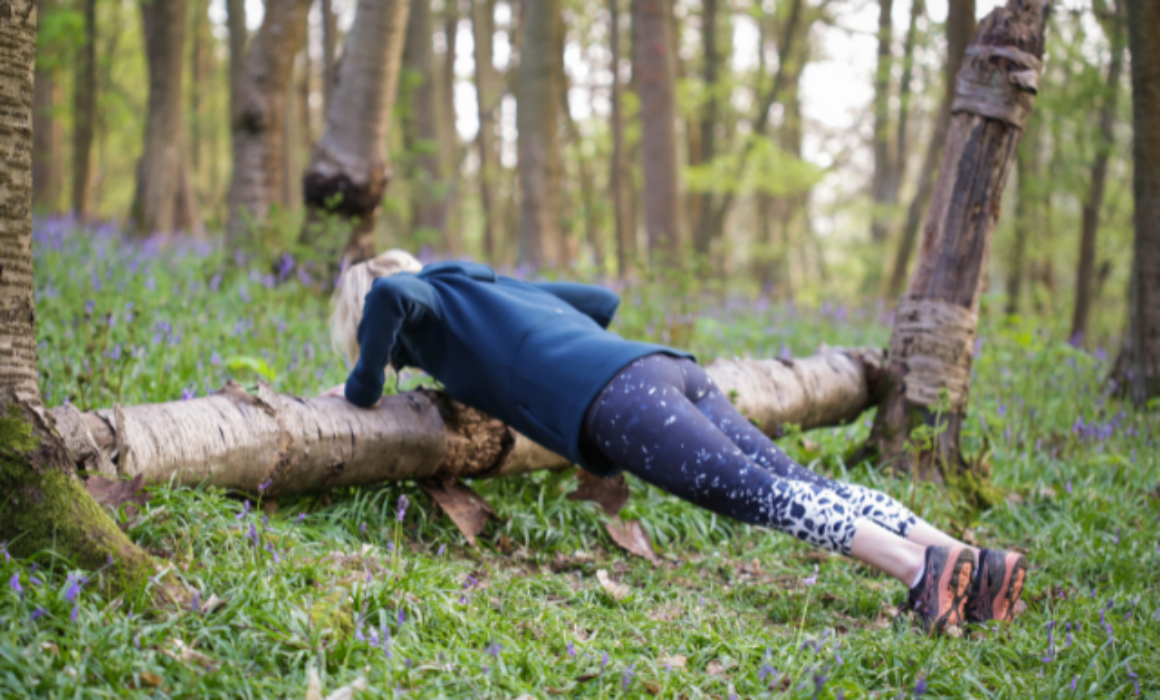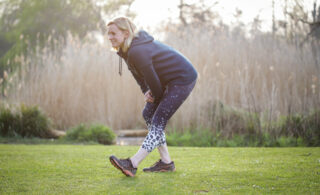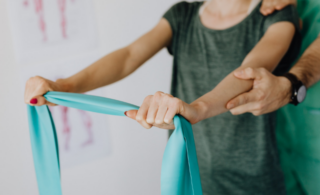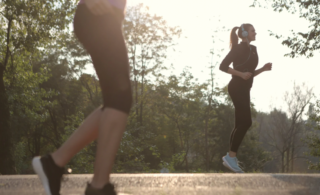
Let's Nail Breast Cancer - Help support our urgent appeal on the 19th - 20th May 2024
Let's Nail Breast Cancer - Help support our urgent appeal on the 19th - 20th May 2024
Let's Nail Breast Cancer - Help support our urgent appeal on the 19th - 20th May 2024
Let's Nail Breast Cancer - Help support our urgent appeal on the 19th - 20th May 2024
Let's Nail Breast Cancer - Help support our urgent appeal on the 19th - 20th May 2024
Exercise may feel impossible after undergoing breast cancer surgery, but it’s important to continue to exercise and to do so in the right way. This article provides some helpful guidance to get you exercising after your surgery.
By Sarah Newman
First things first: do your exercises religiously
The first and most vital piece of advice I can give is to ensure you do everything your physio tells you, pre and post-surgery and radiotherapy. Religiously do these exercises as regularly as instructed, to ensure your shoulder mobility is not restricted. What I want to talk more about here, is where to progress from this.
Stand Tall! Effects of cancer treatment on posture
Trauma to any area of the body will mean you naturally and perhaps subconsciously, want to protect the affected area. If you’ve had a lumpectomy, mastectomy, or any form of breast cancer surgery to the breast/chest area, you may feel your posture slipping, letting the shoulders round to protect the area. The same applies to the stomach if you’ve had a DIEP reconstruction.
So, in terms of rebuilding strength in the upper body to improve posture after treatment, in general I would aim to:
- Practice regular expansion and contraction of the rib cage and intercostal muscles through breathing techniques such as these
- Open up the chest, building on physio exercises by stretching the pectoral muscles regularly, here are some of my favourite examples using simple things you have round the house
- Build upper back strength and isolate smaller muscles around the shoulders to improve posture and shoulder function – here are some examples to get you started
Get Strong! Strength training the upper body
My mission is to support breast cancer patients to feel stronger and more in control of their bodies during and after treatment. Strength training and exercise can be anything from simple bodyweight exercises to Olympic barbell lifting (and anything in between). And the benefits in breast cancer are HUGE.
Twice weekly strength or resistance training will1:
- help keep your bones and joints strong, so important post menopause,
- reduce your risk of developing osteoporosis,
- reduce muscle wastage during treatment (chemo especially),
- ease pain and stiffness in the joints caused by ongoing therapy and/or medically induced menopause,
- increase energy levels,
- reduce weight gain…and the list goes on.
There are precautions you need to take, BUT this does not mean you need to avoid weights and lifting all together.
I have seen clients go from strength to strength (quite literally), using resistance bands lifting kettlebells, barbells, and dumbbells during and after breast cancer treatment, with the right guidance. I would always advise getting the OK from your oncology team first and ensuring you have guidance from a cancer rehab specialist to advise on the best exercises, using the correct technique.
Put simply, these are the rules I follow:
- Nail the shoulder mobility first before lifting too much weight to ensure the muscles in the upper body are working effectively
- When you’re ready to begin lifting, start light and progress slowly. See how your body responds for a few days after lifting before progressing
- Be cautious if you’ve had surgery or treatment to your lymph nodes. Unfortunately this will put you at a lifetime risk of lymphoedema. However this shouldn’t put you off, but specialist guidance is a must as you progress with strength training. Ensure you:
- Don’t wrap resistance bands around the hands (or legs)
- Avoid long (more than 45ish seconds) static holds such as the plank, although that’s not to say you can’t progress to this, but putting pressure through the affected area of the lymph can be risky
- Allow for a rest day after strength training to support recovery, just going on a gentle walk to keep things moving
- Be careful not to compete with your pre-cancer self. If you lifted before cancer, don’t compare weights lifted now (quite yet anyway!)
- Make it fun! Find a trainer or training partner who you get on with, who motivates you and who you enjoy working out with. Get the environment right – outside in the fresh air is always more exhilarating (in my opinion!), or in the comfort of your own home if you prefer.
I genuinely believe that done in the right way, anything is possible post cancer. I hope this blog motivates you to get support in building your upper body strength. If you need any further guidance on strength training the upper body, please do get in touch.
References:
- ACSM: Exercise Guidelines for Cancer Patients and Survivors
About the author
Sarah was treated for cervical cancer in pregnancy in 2018, and in 2019 launched her fitness business ‘Get Me Back’ (www.getmeback.uk). She has completed her CanRehab Level 4 Cancer & Exercise Rehabilitation qualification and is also a Breast Cancer Rehab Coach. She works virtually and face to face in the Surrey countryside and runs regular exercise classes for Future Dreams.
Further information
Future Dreams hold a range of support groups, classes, workshops and events to help you and your carers during your breast cancer diagnosis. These are held both online and in person at the London-based Future Dreams House. To see what’s on offer and to book your place, see here.
To return to the homepage of our Information Hub, click here where you can access more helpful information, practical advice, personal stories and more.
Reviewed March 2023
The information and content provided in all guest articles is intended for information and educational purposes only and is not intended to substitute for professional medical advice. It is important that all personalised care decisions should be made by your medical team. Please contact your medical team for advice on anything covered in this article and/or in relation to your personal situation. The content of this article was created by Sarah Newman and we accept no responsibility for the accuracy or otherwise of the contents of this article. Please note that the guest author of this article has not been paid to write this article. There may be alternative options/products/information available which we encourage you to research when making decisions about treatment and support. The links and/or recommendations in this article to third-party resources are for your information and we take no responsibility for the content contained in those third-party resources. Any product recommendations made in this article are not product endorsements and unless otherwise stated, they are made without any affiliation to the brand of that product. We ask you to note that there may be other similar products available.
Share
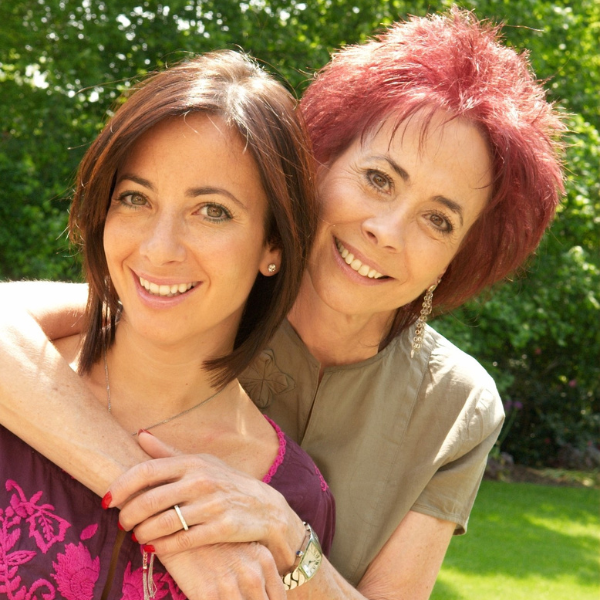
Support awareness research
Donate to those touched by BREAST cancer
Sylvie and Danielle began Future Dreams with just £100 in 2008. They believed nobody should face breast cancer alone. Their legacy lives on in Future Dreams House. We couldn’t continue to fund support services for those touched by breast cancer, raise awareness of breast cancer and promote early diagnosis and advance research into secondary breast cancer without your help. Please consider partnering with us or making a donation.
